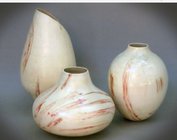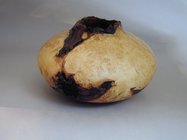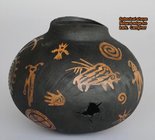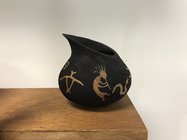Some of my thoughts, to add to what others have said:
If you're starting out with hollow forms, I suggest making several without a laser or camera. You'll have a better feel for what's going on inside. Then, when you add the laser/camera you'll know better what it's showing you.
You will make a few bigger on the inside than on the outside, but just consider it learning and practice.
As
@Dean Center said, initially keep your openings large (or huge, relatively) so you can see what's going on inside.
If you are hollowing without a support system, don't stick you face at the end of the tool to look into the hole as you're cutting. A catch will bring the tool handle into your face/eye/nose. It's far enough away you're unlikely to get blood on the wood, but still undesirable.
A larger opening also reduces your initial investment, as you can do more with a straight tool and don't need a whole army of curved tools.
Shavings will build up inside and clog the tool. Can suddenly grab your tool. So stop and clear before this happens.
Cutting axial (aka end-grain or side-grain or spindle-orientation) forms generally produce shavings closer to dust, which clog the tool less. Radial (aka cross-grain or bowl-orientation) generally makes long curls that clog and grab much more quickly and violently than axial forms. And they can be a lot harder to clear out (often have to rake because blowing or vacuum doesn't do it). So save the radial attempts for after you get some experience.
You can either once- or twice-turn hollow forms. I don't find out-of-round to be a problem - it less noticeable than with a bowl. And it's easier. The wet chips inside are stickier than when dry, so will clog/grab more, and may take a bit of effort to remove.
Personally, I would only twice-turn if I needed the piece end up round - like for a lid (threaded or tight fit). I don't do that often (and don't often plan that far ahead!).




